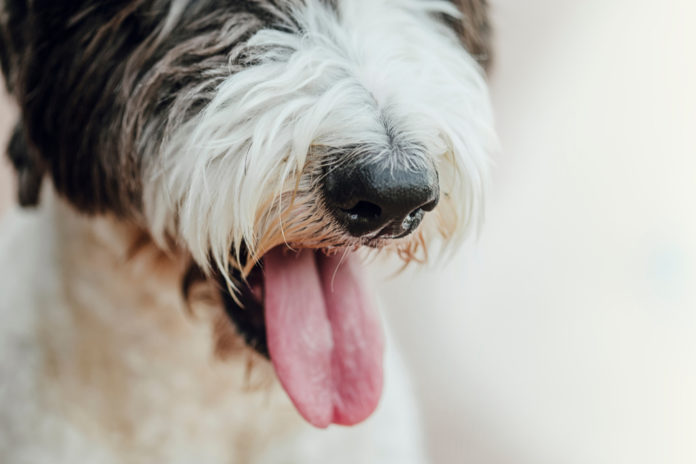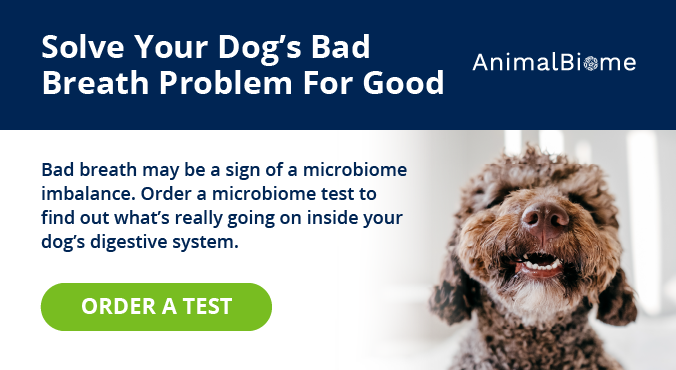What you need to know about bad breath in dogs

Does your dog have bad breath? He’s not alone! Here’s what you need to know about this common problem and how you can keep his mouth healthy and fresh.
It’s one of the most common problems dog parents struggle with…bad breath. Also called halitosis, it can be a sign of a serious underlying health issue and shouldn’t be ignored or simply covered up with breath fresheners.
What causes bad breath
Gum disease
The most common cause of bad breath is a buildup of bacteria on dog’s teeth called plaque. Some plaque harbors ‘bad’ bacteria that produce unpleasant odors and can cause irritation and inflammation of the gums if it isn’t removed regularly. Affecting approximately 80% of dogs by the age of three, gum disease (also known as periodontal disease) can negatively affect dog health if left untreated.
Oral microbiome imbalance
You can’t see them, but your dog’s mouth is a rich community of bacteria and other microbes – this is called the oral microbiome. The oral microbiome becomes imbalanced when specific kinds of bad bacteria start to overgrow, such as the ones associated with gum disease or the ones that produce the smelly odors found in bad breath.
Gut microbiome imbalance
The community of microbes that live in your dog’s digestive tract make up the gut microbiome. Just like in the oral microbiome, the overgrowth of ‘bad’ bacteria in the gut can also cause bad breath.
Bacteria associated with bad breath and gum disease can also trigger a bacterial imbalance in the gut microbiome. Dogs swallow a lot of oral bacteria with their saliva; inevitably some of them end up in the gut. If a dog swallows too many ‘bad’ bacteria that end up growing in the gut, an imbalance can occur. As a result, this may cause bad breath by producing excess smelly gas, which can be absorbed into the bloodstream and eventually exhaled.
Health conditions
Several health conditions are connected to bad breath as well. For example, the breath of dogs with diabetes can smell fruity or like nail polish remover due to the buildup of ketones in their body. The breath of dogs with liver disease can smell musty because the liver is no longer able to properly filter out toxins, resulting in sulfur compounds being released from the lungs. Lastly, the breath of dogs with kidney disease may have a fishy smell due to high urea levels in the body.
Click here to learn more about HOW TO GET RID OF BAD DOG BREATH for good.
Bad breath is one of the earliest symptoms of some diseases, so it’s important for concerned dog parents to check in with their veterinarian promptly to address any underlying health conditions before they worsen.
Preventing and treating bad breath
Here are some great ways you can support your dog’s oral health:
- Brush your dog’s teeth regularly
- Provide high protein chews to help knock off plaque, increase blood flow in the gums, and increase saliva production that will wash away bacteria
- Feed your dog a diet that is high in protein and low in processed carbohydrates
- Check your dog’s gum lines frequently and contact your veterinarian for a dental examination
Bad breath doesn’t have to last forever. Rule out any underlying health issues, prioritize dental hygiene and work to balance your pup’s oral and gut microbiome — and his kisses will smell better in no time!





